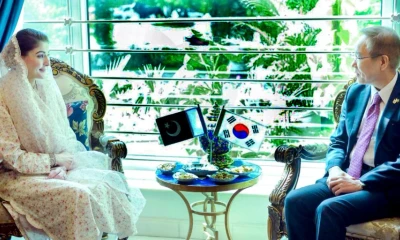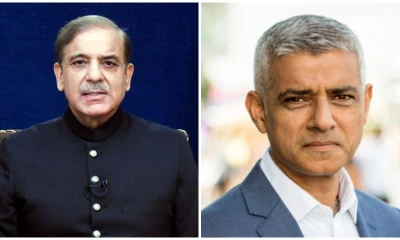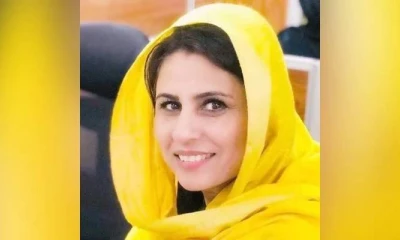Regional
The lessons from colleges that didn’t call the police
Deescalating conflict around protests was possible — but many colleges turned to law enforcement instead.
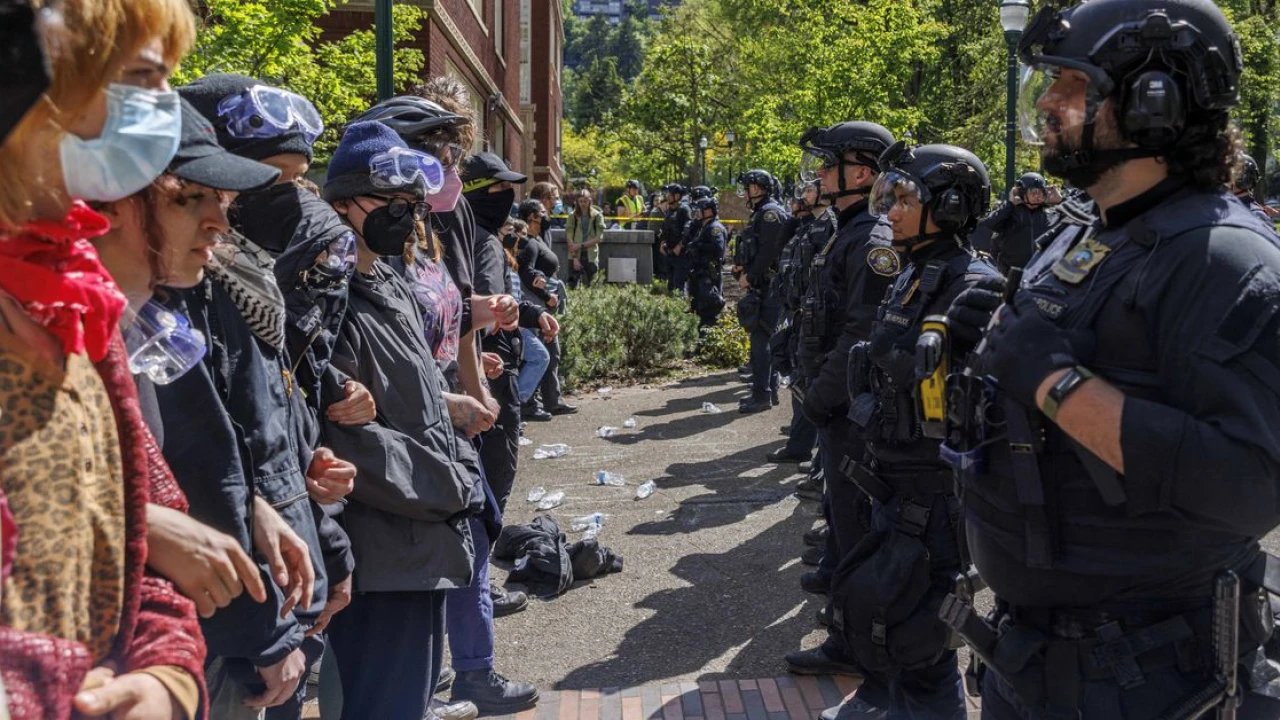
For weeks, police have been arriving on college campuses from New York to California at the behest of university officials, sweeping pro-Palestinian protests and arresting more than 2,100 people. They’ve come in riot gear, zip-tied students and hauled them off, and in some high-profile instances, acted violently.
The aggressive crackdown started when Columbia University’s president, Nemat Shafik, summoned New York Police Department officers to campus in mid-April to bring an end to the student encampment there, one day after she promised Congress she would quash unauthorized protests and discipline students for antisemitism.
That police intervention temporarily dismantled the encampment, and resulted in the arrest of more than 100 protesters on trespassing charges.
But it was also a strategic failure on the part of the university administration. If the university was trying to avoid disruption, it has ended up inviting it instead.
In the days since, as support for the protesters has swelled both at Columbia and at hundreds of colleges across the country, students have set up encampments, organized rallies, and in a few cases escalated their protests by occupying university buildings. Similar protests even cropped up in other countries.
In response, other universities have taken Columbia’s lead and cracked down on these protests, which seek to end colleges’ investments in firms supporting Israel’s occupation and its ongoing assault on Gaza. Nearly 50 universities have called the authorities to intervene, and students and faculty have been beaten, tear gassed, and shot at with rubber bullets by police.
This week, when Columbia escalated its police response, the Columbia Daily Spectator, the student newspaper, reported that “officers threw a protester down the stairs ... and slammed protesters with barricades.” A police officer also fired a gun in a campus building, and others threatened to arrest student journalists.
This can only be described as a major overreaction to student protests. But it also didn’t happen in a vacuum. The police response falls squarely in a long pattern of colleges suppressing pro-Palestinian activism and anti-Israel speech — one that dates back many decades. Currently, universities aren’t applying their rules equally, singling out only some student advocacy as unacceptable campus speech and, in some cases, even changing rules to specifically target these protests. (The Department of Education is now reportedly investigating Columbia for anti-Palestinian discrimination.)
While schools including Columbia were quick to call in law enforcement, however, a few other schools have taken an alternative approach — with vastly different outcomes. Administrators at Brown, Northwestern, and several others negotiated with students, allowed them to continue protesting, or even reached deals to end the encampments by meeting some of the protesters’ demands. As a result, they’ve avoided the kind of disruption and chaos unfolding at universities that called the police.
These divergent outcomes among schools that relied on police and those that didn’t offer an important lesson on how universities should manage campus activism, while ensuring students’ safety and protecting speech.
A messy and misguided response to protests
It only took a day and a half after the first Columbia encampment was set up for Shafik to call the police on April 18. In her letter to the NYPD, she wrote that she had “determined that the encampment and related disruptions pose a clear and present danger to the substantial functioning of the University.” Shafik did not explain what threat the encampments actually posed. (Samantha Slater, a spokeswoman for the university, told Vox that Columbia would not offer comment beyond Shafik’s letter.)
The protest itself was not especially disruptive — even the police said protesters were peaceful. They didn’t get in the way of students going about their daily activities, including attending classes.
In many ways, the demonstration at Columbia was a standard student protest: Demonstrators were raising awareness about a problem and asking their university to do something about it. Encampments have been used as a protest tactic on college campuses for decades, including in recent years, like when students ran divestment campaigns against fossil fuels.
In the 1980s, when Columbia students protested against South African apartheid, with virtually the same divestment demands as the current protesters have, they blockaded a campus building for three weeks. In that case, the school came to an agreement with the student protesters rather than turning to the police to break up the demonstration.
While other campus protests historically have led to arrests, few have attracted such a massive national police response so swiftly. What’s taking place now looks similar to how schools responded to anti-war protests in the 1960s and ’70s, when schools, including Columbia, violently cracked down on students. And in 1970, the National Guard infamously shot at protesters at Kent State in Ohio and killed four people. Yet, as my colleague Nicole Narea wrote, the protests then were more aggressive than the encampments on campuses today.
The line between legal and illegal protest is often clear. Students have a right to protest in certain campus areas, but occupying a building constitutes trespassing. Enforcement of these rules, however, is seldom applied equally.
In many cases, universities have alleged that the protests were disruptive and pointed to the fact that some Jewish students felt that the encampments created an unsafe environment for them on campus. While harassment and intimidation can be reasons to involve law enforcement, the accusations against these protesters mostly focused on their chants and campaign slogans — and in many cases wrongly conflate anti-Israel rhetoric with antisemitism. (It’s worth noting that the arrested student protesters have largely been charged with trespassing, not harassment or violent acts.)
One of the other problems with how many universities and officials have responded to pro-Palestinian demonstrations is that they have changed their protest rules since October 7, in some instances specifically targeting Palestinian solidarity groups.
At Columbia, for example, the university issued onerous protest guidelines, including limiting the areas students are allowed to protest and requiring that demonstrations be registered weeks in advance. Northwestern University abruptly imposed a ban on erecting tents and other structures on campus, undermining ongoing protests. Indiana University preemptively changed its rules one day before its students set up an encampment by disallowing tents and changing a decades-old rule. And in Texas, Gov. Greg Abbott issued an executive order requiring that public universities change their free speech policies and singled out pro-Palestinian groups that he said ought to be disciplined.
Such moves have only added fuel to the protests. They also put students and faculty in danger, as police have conducted violent arrests. (Why were there snipers on roofs at Indiana University, anyway?)
It can also ultimately be ineffective; after state troopers arrested students at the University of Texas, for example, the Travis County Attorney’s Office dismissed the criminal trespassing charges, saying they lacked probable cause.
Is there a better response to campus protests?
Not all universities have turned to the police in response to pro-Palestinian protests. Those that chose a different path have seen much less tension than those that did.
Evergreen State College, for example, agreed to its student demands, promising to divest from businesses profiting off human rights violations in the occupied Palestinian territories. Students agreed to end their encampment in response.
Schools that didn’t necessarily acquiesce to protesters’ demands took other, non-escalatory steps to quell demonstrations. Brown University, which had last year called police to disband protesters, took an alternative approach this time around: The university negotiated with protesters, and organizers agreed to clear the encampment earlier this week after the school’s governing body announced that it will hold a vote on divesting from companies with ties to Israel later this year. Northwestern University similarly reached a deal with its students by reestablishing an advisory committee on its investments.
At Michigan State University, President Kevin Guskiewicz visited the student encampment himself and talked to the protesters about their concerns. He allowed students to continue the protest, so long as they applied for a permit, which the students did and the university granted. As a result, the school has avoided the kind of disruptions seen at Columbia and other universities.
There’s a simple way for universities to handle these protests: Treat them like other protests.
As the American Civil Liberties Union wrote in an open letter to college and university presidents, schools can announce content-neutral rules and enforce them — that is, set up guidelines that don’t just target certain protests, such as the ongoing pro-Palestinian ones. “The rules must not only be content neutral on their face; they must also be applied in a content-neutral manner. If a university has routinely tolerated violations of its rules, and suddenly enforces them harshly in a specific context, singling out particular views for punishment, the fact that the policy is formally neutral on its face does not make viewpoint-based enforcement permissible,” the ACLU wrote.
At Columbia, where the aggressive police response started a national pattern, it’s hard to argue that enforcement was neutral from the start of the encampment. “Just imagine these students were protesting, say, in solidarity with women’s protests in Iran,” wrote Zeynep Tufekci, a sociology professor at Princeton and author of the book Twitter and Tear Gas: The Power and Fragility of Networked Protest, in a post on X. “I don’t see how [the] NYPD would have been called in to arrest them 36 hours into their then small protest.”
Instead, Columbia called law enforcement, and now campuses across the country are environments that are unsafe for students and faculty alike. Pro-Israel counterprotesters, for example, attacked student encampments earlier this week at the University of California Los Angeles with pepper spray, wooden planks, and fireworks. (Notably, while schools acted swiftly to uproot the encampments, UCLA was an example of how slow they have been in actually protecting the protesters from violence.)
Ultimately, the moment Shafik called in the NYPD set the stage for a far more disruptive end of the semester for schools nationwide than what the original protests would have achieved on their own.
“From the very beginning, calling in the police quickly has been an escalatory dynamic,” Tufekci wrote on X. “It almost always is.”
Crime
Two killed in alleged target killing in Karachi
Police officials said that the suspects who threatened the victims are involved in drug dealing and robbery

Karachi: Unknown suspects escaped after shooting dead two friends in an alleged target-killing incident near Gharib Nawaz Colony in Korangi area of Karachi.
The police said that the victims were identified as Imtiaz and Muhammad Ali. They were friends and were mechanics by profession. The criminals of the area kept threatening to kill the victims by blaming them for their arrest.
According to the police, three suspects on the same motorcycle fired 10-12 shots. The police team found three bullet shells at the scene. The crime scene unit is collecting evidence from the scene, while the CCTV around the scene is also being searched.
The initial investigation of the police revealed that the victims were receiving threats from the criminals, the criminals suspected that the two friends had a hand in their arrest.
Police officials said that the suspects who threatened the victims are involved in drug dealing and robbery.
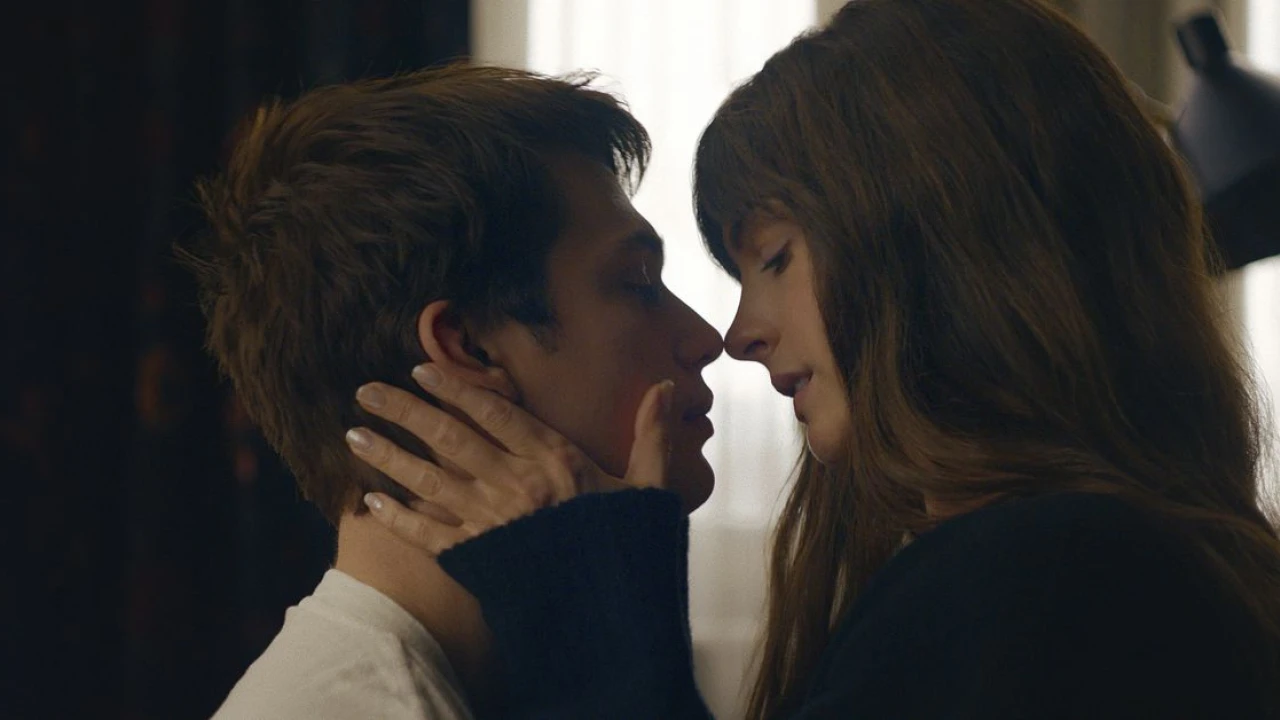
There’s something about age gaps right now. They’re all over the place.
The Idea of You, out on Amazon Prime this week, features Anne Hathaway as a 39-year-old mom falling in love with a 24-year-old boy band star, only to be haunted by tabloid covers calling her a cougar. It’s based on a novel of the same title by Robinne Lee, dubbed by Vogue “the sleeper hit of the pandemic.”
Meanwhile, over the past few months, the Cut has twice gone viral with articles about age gaps. In December, it published a reported article by Lila Shapiro interviewing multiple couples with significant age gaps. In March came a personal essay by Grazie Sophia Christie about her relationship with her husband, who’s 10 years older. On social media, Shapiro’s report was largely met with fascination and Christie’s with recriminations; both were widely distributed and discussed.
In her new memoir Consent, writer Jill Ciment revisits her celebrated memoir of 20 years ago, Half a Life, about her marriage to the man she met when she was 17 and he was her 47-year-old art professor.
“Should I refer to him in the language of today — sexual offender, transgressor, abuser of power?” Ciment asks, referring to her late husband, as she describes their first kiss. “Or do I refer to him in the language of 1970, at the apex of the sexual revolution, when the kiss took place — Casanova, silver fox?”
The ways we talk about age-gap relationships have changed so completely so fast. They’ve come to be a stand-in for the way the Me Too movement changed our whole erotic vocabulary: Before, titillating; after, abusive. When Taylor Swift first releases “All Too Well” in 2012, it’s received as a tragic breakup song about Swift’s relationship with Jake Gyllenhaal, who she dated when she was 20 and he was 29. When she rereleases it in 2021, it’s received as an account of predatory behavior.
Age-gap relationships in the abstract have become a place of talking through our newly heightened societal awareness of power dynamics and the potential therein for abuse — especially when the standard gender roles flip. Frequently, the discourse has almost nothing to do with the people actually in the relationships in question.
Historically, men were expected to be older than their wives. The reasons why are as gross as you think.
“Haven’t you ever heard that the girl is supposed to be half the man’s age, plus seven?” asks Patty O’Neill in the 1951 play turned 1953 film The Moon Is Blue. Patty, 22, is wooing a 30-year-old man at the time, and she is delighted to find that the math “just works out.”
Today, the rule “half your age plus seven years” is popularly held to tell you the youngest possible person you can date without being creepy. A 30-year-old, the idea is, can just about get away with dating a 22-year-old of any gender, but get down to 21 and things start to feel weird.
Historically, however, the equation was supposed to dictate the ideal age gap between a man and a woman. It seems to have been fairly common around the midcentury. In 2014, the New Republic found the idea turning up in sources as disparate as The Moon Is Blue (1951) and quotes from Elijah Muhammad in The Autobiography of Malcolm X (1965). American newspapers of the 1930s ascribed the rule to Maurice Chevalier, or, more vaguely, to the French.
The ideology that considers this age-gap ideal is profoundly misogynistic. Part of the reason the husband is supposed to be the older figure (twice his wife’s age minus 14 years) is to increase his status. Wiser than his wife, the husband could have his own established source of income and his own established adult life before he entered into marriage. The wife would rely on her husband for all of the above.
In exchange, the wife would grant her husband her youthful beauty, and the common wisdom held that this exchange was equal. The tricky thing, though, was that the wife’s youth is by its nature fleeting, while the husband’s wealth would with any luck only increase with time. The wife had a ticking clock placed on her social value, and it was up to her to make a good marriage before the clock struck midnight and her social value disappeared.
This is a worldview in which a woman’s access to adulthood depends upon her erotic value. Her beauty is all she has to trade to the world in order to be granted the status of full personhood — and even that personhood is contingent, because the wife can only ever access it through her husband.
In Christie’s Cut essay, she positions her own marriage as being part of this very legacy. Christie consciously set out to choose an older husband, she writes, because she wanted to benefit from the financial security of an older and wealthier partner, and she thought her best bet was to use the currency of her youth and beauty before they became devalued by age. “I had, like all women, a calculator in my head,” she writes. “I thought it silly to ignore its answers when they pointed to an unfairness for which we [Christie and her fellow female classmates at Harvard] really ought to have been preparing.”
The asymmetry in power between Christie and her husband, she writes, benefits her so much that she feels no real need to right it. “Who is in charge, the man who drives or the woman who put him there so she could enjoy herself?” she asks rhetorically. “I sit in the car, in the painting it would have taken me a corporate job and 20 years to paint alone, and my concern over who has the upper hand becomes as distant as the horizon, the one he and I made so wide for me.”
It’s only fair to take Christie at her word that she’s happy in her marriage. Yet the exchange she describes sits oddly in the modern era, particularly in the post-Me Too era’s heightened awareness of sexual power dynamics. You run across the same dilemma in all the age-gap think pieces.
“It’s perfectly possible for two consenting adults to have a healthy and equitable relationship despite a significant age gap,” mused a Guardian article from 2020 on Leonardo DiCaprio’s habit of dating only 25-year-olds. However, the article continued, “It feels like a major flag if a man consistently dates women half his age. One suspects that person isn’t actually looking for a partner, but an admirer.”
In her Cut article, Shapiro outlines the basic problem. The anti-age-gap discourse, she writes, emerged from the Me Too movement’s “concern with power differentials and with coercion and consent.” On the other hand: “It also sits at odds with Me Too’s core ethos — ‘Believe women’ — by raising an outcry on behalf of women who, by all available public accounts, have no complaints about their relationships. Even if they say they are happy, the age-gap critics don’t believe them.”
In the wake of the new discourse, even the people involved in the relationships can’t always believe themselves or the things they say. Much of the tension of Consent comes from Ciment’s anguished and untrusting analysis of her old memoir, the one where she told the story of her marriage as a straight love story.
In her first memoir, 1996’s Half a Life, Ciment consistently describes herself as the sexual aggressor in her early encounters with her future husband, Arnold. Yet looking back over the manuscript 25 years later in Consent, she feels her old account cannot be trusted. “Am I as delusional as Humbert Humbert when he narrates (Lolita is twelve at the time), ‘It was she who seduced me’?” Ciment writes. “When I wrote this, was I protecting Arnold? The statute of limitations had long ago passed. Was I protecting my marriage? We had just celebrated our twenty-seventh anniversary.”
Ciment and Arnold were married until Arnold’s death in 2016, and according to Ciment, their marriage was a happy one. Still, she keeps interrogating herself. “Had Arnold experienced the sea change of the MeToo era, would he have come to believe that he crossed a line when he first kissed me?” she writes. “Does a story’s ending excuse its beginning? … Can a love that starts with such an asymmetrical balance of power ever right itself?”
Things get even more complicated when we reverse the gender roles.
Is there a gender swap exception?
Discussions about age-gap relationships in which the woman is older than the man tend, on average, to be less about whether or not the woman is a predator and more about whether or not she should be humiliated for dating a younger man. Her detractors might dismiss her as a desperate cougar; her supporters might frame her dating decisions as a feminist triumph.
That’s the tension at the heart of The Idea of You, both the Hathaway film and the novel it’s based on by Robinne Lee. The story centers around Solène, a 39-year-old whose ex-husband is dating a younger woman. Solène grits her teeth at his choices, but she’s not surprised by them: “Because that’s what divorced men in their forties did,” she narrates. “His stock was still rising. His power still intact. Daniel had become more desirable, and I somehow less so. As if time were paced differently for each of us.”
Shortly thereafter, Solène finds herself entangled in a love affair with the much younger Hayes Campbell, lead singer of her daughter’s favorite boy band. In the book, Hayes is 20. In the movie, he’s 24. Either way, he’s a lot younger than Solène. When she suggests that the age gap might become a problem, however, Hayes scoffs.
“If our ages were reversed, no one would bat an eyelash. Am I right?” says Hayes in Lee’s novel. “So now it’s just some sexist, patriarchal crap, and you don’t strike me as the kind of woman who’s going to let that dictate her happiness. All right? Next issue.”
Part of the fantasy of The Idea of You is the idea of a woman whose social currency increases as she ages in the same way that her husband’s does. Solène’s beauty and sophistication are so potent that she does not need to be young to be a catch. Her social value is confirmed by her attractiveness to a man who is not only youthful and beautiful himself but also bears the traditional markers of male power: Young Hayes is richer than Solène’s middle-aged ex-husband will ever be, so that he can fulfill both sides of the old age-gap bargain at once.
The fantasy here is not a world in which women’s social power doesn’t depend on their sexual currency. The fantasy here is that a woman’s sexual currency might not depreciate over the course of her 30s — particularly if the woman in question is played by Anne Hathaway, long celebrated for her eternal youthfulness. The result is a sort of mirrorverse version of Christie’s worldview: These are the rules, so let’s maximize our power within them.
For some readers, this fantasy is intensely potent and affirming. “It teaches that women remain desirable, strong, and sexually viable as they age: there is no end date,” wrote one reader on Goodreads. “It calls out gender-based double standards. It empowers women to block out all the patriarchal noise and build the life they want. When we change our thoughts, we change our world. This. This is what I needed.”
For other readers, the fact of Solène’s gender doesn’t change what they see as the fundamental problem with an age-gap romance: the age part.
“idk who lied to this woman,” wrote another Goodreads reviewer, “but f*cking some kid 20 years younger than you is not the feminist slay you think it is.”
What happens in the end?
There is a question neither The Idea of You nor Christie engages with, which is: What happens as time and age come for all of us? The problem of aging rarely appears in the stories about age-gap relationships, but it is central to the people living in those relationships.
“It’s only when the two people actually love each other and want to build a life together that the age gap, as an age gap, not as a gap that stands in for various inequities, actually matters,” says the writer B.D. McClay in an essay on Substack responding to Shapiro’s Cut piece. “If you want to get married and have kids, then you have to deal with what I think of as the sad math: how long the older partner is likely to see your mutual children get to become. Any parent can die, but what makes this different is that the absolute best case scenario might involve, for some, not seeing your kids ever graduate from college.”
The problem of aging fills the final pages of Consent, which sees Ciment caring for Arnold toward the end of his life. These scenes are not, she feels, literary.
“Who would believe a scene in which Lolita takes Humbert Humbert for cataract surgery?” she writes. “Or worries about his prostate? How would I compose the scene where Lolita arranges hospice care for the man who supposedly stole her childhood? Wouldn’t I have to include the day Lolita is at Humbert Humbert’s bedside when he dies? Isn’t that what happily ever after means? A love that lasts long enough that one lover is there to close the other lover’s eyelids?”
Ciment is able to come to a resolution of sorts on her questions in her description of the day of Arnold’s death. She sees him lying in their bed, in “the same position he was in when I went to seduce him forty-five years before,” she writes. As she goes to kiss him, she knows that for all her fretful wondering about their first kiss and what it signifies, “there could be none about our last.” Their final kiss is for the pair of them alone, as individuals and as a couple, and what it signifies is them and their long marriage. It is separate from the asymmetry of power from which they began.
The fantasy of The Idea of You, however, cannot quite stand up to such realism. It cringes away from the idea of a Solène who might be past middle age and into old age, who might require caregiving or who might even look significantly older than her boyfriend when they’re lounging by a European poolside together. In Lee’s novel, Hayes and Solène split up at the end of the book and don’t reunite, with Solène explaining that the public scrutiny of their relationship is too difficult for her 12-year-old daughter. The film mostly preserves this ending while tacking on a brief epilogue that suggests Hayes and Solène might reunite after her daughter is off at college. In either case, the relationship presented to the audience is preserved in amber, crystallized at the moment in which the age gap is sexy and not potentially tragic.
That age-gap fiction and discourse tends to avoid those tragedies is one of the tells that that age-gap discourse is never about individual people, or even individual couples. It is about the whole history of misogynistic ideology from which our age-gap expectations emerge, and how drastically the way we think about sex and power changed in the space of a few years. The age-gap discourse is a metaphor for the way Me Too changed the world — even if the people in age-gap relationships would rather that it weren’t.
Correction, May 2, 5 pm ET: A previous version of this story miscalculated the inverse version of the age gap rule. The inverse of “half your age plus seven years” is “twice your age minus 14 years.”
-

 Regional 1 day ago
Regional 1 day agoSindh govt introduces smart card for bus fares in Karachi
-

 World 2 days ago
World 2 days agoTurkiye cuts off all trade ties with Israel
-

 Health 1 day ago
Health 1 day agoPunjab to provide free medicines to 0.2m patients at their doorstep
-

 Pakistan 2 days ago
Pakistan 2 days agoPPP nominates Kundi, Haider for KP, Punjab governorship
-

 Regional 2 days ago
Regional 2 days agoPress Club president killed, nine wounded in Khuzdar bomb blast
-
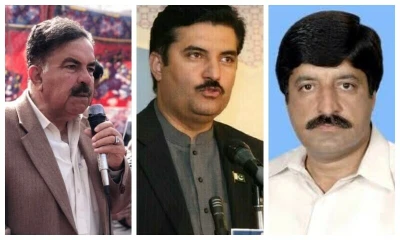
 Pakistan 1 day ago
Pakistan 1 day agoZardari approves appointments of Punjab, KP, Balochistan governors
-
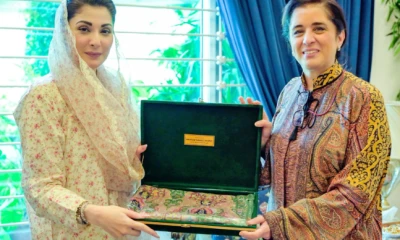
 Pakistan 2 days ago
Pakistan 2 days agoCM Maryam meets WHO Regional Director Dr Hanan Balkhy
-
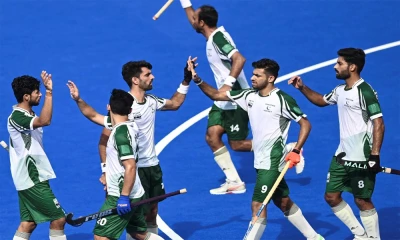
 Sports 1 day ago
Sports 1 day agoAzlan Shah Cup: Pakistan to play 1st match against Malaysia











